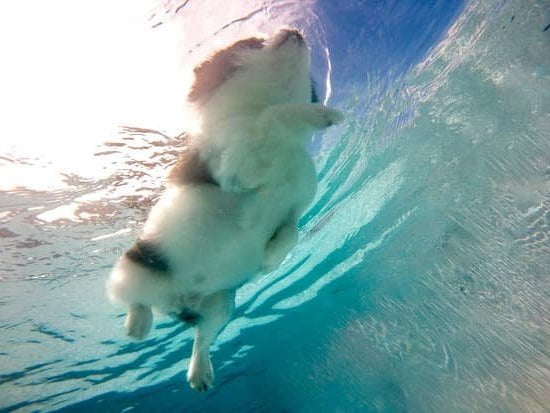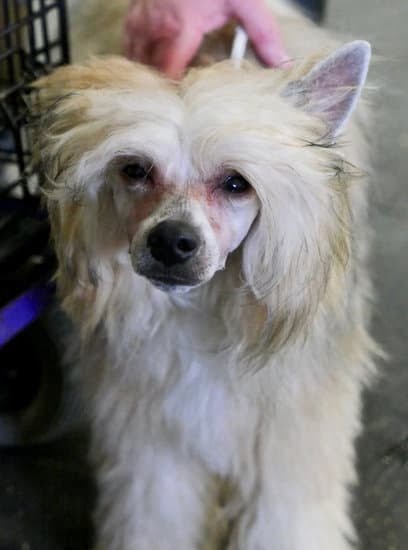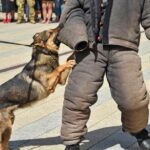Are you wondering how to train a dog to not be toy aggressive? Toy aggression in dogs can be concerning and challenging to manage, impacting their behavior and relationships with other pets and people. In this article, we will delve into the reasons behind toy aggression and explore effective training methods to address this behavior.
When it comes to understanding toy aggression in dogs, it is important to recognize the underlying factors that contribute to this behavior. We will explore the impact of genetics, upbringing, socialization, and instinctive behaviors on a dog’s tendency towards possessiveness and resource guarding. Understanding these factors is crucial in developing effective training strategies to modify the dog’s behavior positively.
In addition to understanding toy aggression, we will also discuss identifying signs of toy aggression in dogs. From growling and possessiveness to resource guarding, recognizing these behaviors is essential in addressing the issue early on. By being able to identify these signs, pet owners can implement appropriate training methods to discourage possessiveness and promote healthy interactions with toys.
Identifying Toy Aggression
Toy aggression in dogs can manifest itself in various ways, and it’s important for pet owners to be able to identify the signs of this behavior. One common indicator of toy aggression is growling, which occurs when a dog feels threatened or possessive of a particular toy.
Additionally, dogs may exhibit possessiveness by becoming overly protective of their toys and not allowing anyone, including their human family members, to come near them while they are playing. Resource guarding is another sign of toy aggression, where a dog demonstrates protective behavior over their toys or other possessions.
Growling
When a dog growls while playing with a toy, it’s important not to ignore this behavior. Instead, it’s crucial to address it right away to prevent escalation and potential incidents of aggression in the future.
Possessiveness
Dogs that exhibit possessiveness over their toys may display behaviors such as stiffening their body, staring at anyone approaching them while they have the toy, or even snapping if someone tries to take the toy away.
Resource Guarding
Resource guarding involves a dog defending their toys or possessions by exhibiting aggressive behavior when someone comes near them. This can include snarling, showing teeth, or outright attacking if someone tries to take the toy away.
Understanding these signs is essential in recognizing and addressing toy aggression in dogs as early as possible. By being aware of these behaviors, pet owners can take proactive steps towards training their dogs not to be toy aggressive using positive reinforcement techniques and desensitization methods.
Positive Reinforcement Training
Toy aggression in dogs can be a concerning behavior that impacts the dog’s relationship with its owners, other pets, and even children. Understanding the reasons behind toy aggression is crucial in addressing and managing this behavior. Dogs may exhibit toy aggression due to their natural instinct to guard resources, fear of losing their toys, or lack of proper socialization during puppyhood.
Understanding Toy Aggression in Dogs
It is important for dog owners to recognize the signs of toy aggression, which can include growling, snapping, possessiveness over toys, and resource guarding. If these behaviors are left unaddressed, they can escalate and result in dangerous situations. Recognizing the early signs of toy aggression allows for timely intervention and training to modify the dog’s behavior.
Utilizing Positive Reinforcement Methods
Positive reinforcement training is an effective way to teach a dog to not be possessive of their toys. This involves rewarding the dog with treats, praise, or play when they exhibit desirable behaviors such as sharing their toys willingly or allowing them to be handled without exhibiting aggression. By consistently rewarding good behavior, dogs learn that sharing and cooperation lead to positive outcomes.
When it comes to how to train a dog to not be toy aggressive, positive reinforcement methods have been proven effective in modifying toy-aggressive behaviors. This approach helps build trust between the dog and its owner while promoting a positive association with sharing and playing with toys. Consistency and patience are key when utilizing positive reinforcement methods for training purposes.
Desensitization Techniques
Desensitization techniques are an effective way to address and modify a dog’s toy aggression behavior. This approach involves gradually exposing the dog to situations that trigger toy aggression in a controlled and positive manner, helping them learn new, non-aggressive behaviors in response. The goal of desensitization is to reduce the dog’s negative reaction to specific triggers by changing their emotional response.
One way to start desensitizing a dog to toy aggression is by using systematic desensitization, which involves introducing the dog to the triggering stimulus at a low intensity, where it doesn’t provoke an aggressive response. Over time, the intensity of the stimulus is gradually increased as the dog becomes more comfortable and less reactive.
For example, if a dog exhibits possessive behavior over a specific toy, start by introducing a similar but less preferred toy and rewarding calm behavior around it.
Counterconditioning is another technique that can be used in conjunction with desensitization. This method involves changing the emotional response of the dog towards the trigger by associating it with something positive. In the context of toy aggression, this could mean pairing the presence of toys with something enjoyable or rewarding for the dog, such as treats or playtime.
It’s important to note that desensitization requires patience and consistency. Progress may be slow, and it’s crucial to work at a pace that ensures the dog remains comfortable and relaxed throughout the process. Furthermore, seeking guidance from a professional dog trainer or behaviorist can provide valuable support and expertise when implementing desensitization techniques for addressing toy aggression in dogs.
| Desensitization Technique | Benefits |
|---|---|
| Systematic Desensitization | Gradually reduces negative reactions to triggers |
| Counterconditioning | Associates trigger with positive experiences |
| Professional Guidance | Offers expertise and support for effective implementation |
Redirecting Behavior
When dealing with toy aggression in dogs, it is important to redirect their behavior from possessiveness to obedience and cooperation through training exercises. By implementing the following techniques, pet owners can effectively train their dogs to not be toy aggressive.
To successfully redirect a dog’s behavior, consider utilizing the following methods:
1. Obedience Training: Implementing basic obedience training can help shift a dog’s focus from possessiveness towards following commands. Teach the dog simple commands such as “sit,” “stay,” and “drop it” to redirect their attention and reinforce obedience.
2. Interactive Play: Engaging in interactive play with the dog can help promote cooperation and reduce possessive behavior. Use toys that require the dog’s participation, such as fetch or tug-of-war, to encourage positive interaction and discourage possessiveness.
3. Positive Reinforcement: Rewarding the dog for displaying non-aggressive behavior towards toys is crucial. Whenever the dog shares or willingly gives up a toy, offer praise, treats, or affection as a form of positive reinforcement.
By consistently incorporating these training exercises into the daily routine, pet owners can gradually teach their dogs to overcome toy aggression and foster a cooperative attitude towards sharing toys with others.
Toy Management
Managing toys in a multi-dog household is crucial to prevent conflicts and promote harmonious play among the pets. Here are some effective strategies for toy management:
1. Individual Toys: Provide each dog with their own set of toys to minimize competition and possessiveness. This ensures that each dog has their own belongings and reduces the likelihood of resource guarding behavior.
2. Supervised Playtime: Monitor the dogs during playtime to intervene if any conflicts or possessive behaviors arise. This allows you to address any issues promptly and guide the dogs towards cooperative and non-aggressive play.
3. Rotating Toys: Rotate the toys available to the dogs on a regular basis, so they don’t become fixated on specific items, reducing the chances of possessive behavior developing over a particular toy.
By implementing these strategies for toy management, pet owners can create a peaceful environment for their dogs to enjoy playtime without feelings of possessiveness or conflict over toys. Additionally, incorporating positive reinforcement training techniques can further reinforce cooperation and reduce toy aggression in a multi-dog household.
When providing multiple dogs with toys, it is essential to prioritize their well-being by guiding them towards healthy play interactions and preventing possessive behaviors over toys. By understanding how to train a dog to not be toy aggressive and effectively managing their toys, pet owners can cultivate a positive environment for all their pets to thrive in.
Seeking Professional Help
Toy aggression in dogs can be a complex behavior to address, and in some cases, seeking the assistance of a professional dog trainer or behaviorist may be necessary for effective intervention. Professional help can provide valuable expertise and guidance in understanding the root causes of toy aggression and implementing appropriate training techniques.
When considering professional help for toy aggression issues in dogs, it is important to look out for persistent or escalating aggressive behaviors despite consistent training efforts. This may include aggressive displays such as growling, snarling, snapping, or biting when attempting to take away a toy from the dog. Additionally, if the dog’s possessiveness extends beyond toys to other items or food, seeking professional help becomes crucial.
A professional dog trainer or behaviorist has the knowledge and experience to assess the specific triggers and underlying reasons behind a dog’s toy aggression. They can develop a customized behavior modification plan tailored to the individual needs of the dog and the household. Through structured desensitization techniques, positive reinforcement methods, and specialized training exercises, they can work with the owner to address and modify the aggressive behaviors effectively.
| Professional Help Considerations | Description |
|---|---|
| Persistent Aggressive Behaviors | If aggressive behaviors persist despite training efforts. |
| Extensive Possessiveness | If possessive behaviors extend beyond toys to other items or food. |
Consistency and Patience
In conclusion, training a dog to not be toy aggressive requires dedication, patience, and consistency. It is essential to understand the reasons behind the behavior and identify the signs of toy aggression in dogs. Utilizing positive reinforcement training and desensitization techniques can help teach a dog to share and not be possessive of their toys. Redirecting behavior and managing toys in a multi-dog household are also important strategies in addressing toy aggression.
Seeking the assistance of a professional dog trainer or behaviorist may be necessary in severe cases of toy aggression. However, with consistent training and patience, positive results can be achieved. It’s important for dog owners to remain committed to the process and understand that overcoming toy aggression takes time.
In the end, the rewards of persistence in training a dog to not be toy aggressive are well worth it. A harmonious environment where dogs can play together without conflicts is achievable through consistent training and patience. By investing time and effort into addressing toy aggression, both the dog and its owner can enjoy a more peaceful and enjoyable relationship.
Frequently Asked Questions
How Do You Break Toy Aggression in Dogs?
Toy aggression in dogs can be addressed through positive reinforcement training. Teach your dog to “drop it” or “leave it” and reward them when they comply. Gradually increase the challenge to reduce possessiveness.
How to Stop Your Dog From Being Possessive Over Toys With Other Dogs?
To prevent possessiveness over toys with other dogs, establish rules and boundaries during playtime. Offer different toys for each dog, supervise their interactions, and intervene if any possessive behavior arises.
Can Aggression Be Trained Out of a Dog?
Yes, aggression can be trained out of a dog through consistent and patient training methods. Seek the help of a professional dog trainer or behaviorist to develop a personalized plan for addressing your dog’s aggression issues.

Welcome to the blog! I am a professional dog trainer and have been working with dogs for many years. In this blog, I will be discussing various topics related to dog training, including tips, tricks, and advice. I hope you find this information helpful and informative. Thanks for reading!





